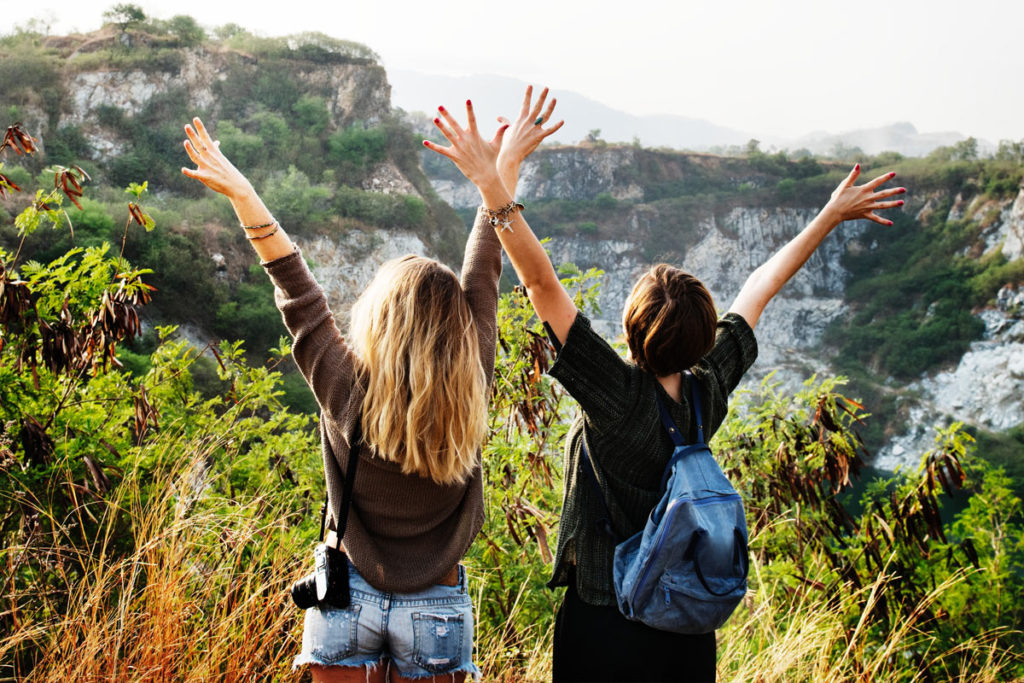I don’t know about you, but I would lose my head if anything happened to my expensive camera while on a trip. The thing is, cameras are very fragile. A small bump on the wall and your lenses are scratched or worse, broken. So camera protection is really important, you know this! In fact, you have had this knowledge from the very day you bought your camera. So, what measures have you taken to keep your camera safe, especially when on the road? Ironically, many people are oblivious of good camera safety. A mistake that might cost you dearly. You owe it to yourself to keep your camera safe while traveling. Here’s how.
Camera Protection #1
It All Comes Down To Your Camera Bag!

If you are expecting a bumpy ride (which is often the case) a padded bag is a must! This provides an extra layer of protection for your camera, lenses and any gear that may be susceptible to breaking. Camera bags come in all kinds of variations ranging from backpacks, suitcases and sling bags so it all comes down to a matter of preference. However, backpacks come with convenience and ease of carrying while sling bags are hard to get into hence much safer and harder to steal from.
You can get a wide selection of camera bags to choose from with bags like Lowepro and Tenba dominating the market. Lowepro bags come in all shapes, sizes, and forms while Tenba pays attention to little details such as waterproof material. Speaking of, protection from harsh weather is another feature you should look for in a bag.
Camera Protection #2
A Cheaper Alternative

In case you are reading this on the road and you packed your camera in an ordinary non-padded bag, no worries, there is a quick fix for this. You can easily convert your clothes to padding by carefully wrapping them around your gear. How’s that for a life hack?
A disclaimer though; this method can only take you so far before you end up damaging your gear. This is because clothes don’t have the adequate cushioning to absorb shock from bumps or occasional knocks on your bag. I suggest you use this as you save up for a well-padded camera bag.
Camera Protection #3
Detach Gear Before Packing

When I say detach your gear, I mean detach everything down o the camera lenses. Make sure you pack the body separately from the lenses and tripod. This helps mitigate the damage in case of any collisions. It also helps in ensuring you pack the must-have gear separating them from those you can do without.
Speaking of, when packing your must-have equipment, don’t leave out cleaning stuff such as wipes as they come in handy when on the road. Another often left behind item is the camera charger which most people substitute for more batteries. Save on space by carrying two batteries and a charger rather than numerous batteries.
Camera Protection #4
Opt For Bags With Compartments

Compartments help keep things organized. They also help in minimizing the chances of equipment colliding with each which often leads to scratching or worse, breaking. Modern bags come with different compartment designs some allowing for carrying your phone and laptop. My favorite compartment type is the removable, padded kind. Other than protecting your gear, they also give you the option of expanding bag storage space by removing some sleeves in the compartments. They are also great for transforming an ordinary bag to a protective camera bag by simply transferring the sleeves to another bag.
Camera Protection #5
Be Vigilant!

This doesn’t sound like much help. Vigilant is such a broad term, right? Well, to narrow it down, camera safety while on the road doesn’t just apply to avoiding potential damage to your camera. It trickles down to keeping your camera safe from itchy fingers and sometimes misplacement. You would be surprised at how many people lose their cameras at the airport. Sometimes it’s straight up theft while other times your bag may get lost in transit. A fix for both problems is to avoid checking hence keeping it on you. Although it’s hard to get your camera stolen when carrying it, begin alert while walking through crowds streets helps altogether. You should also have information on the areas you plan to visit to avoid any unpleasant surprises. These are top of the list of the many things you ought to do to avoid losing your camera.


Comments are closed.